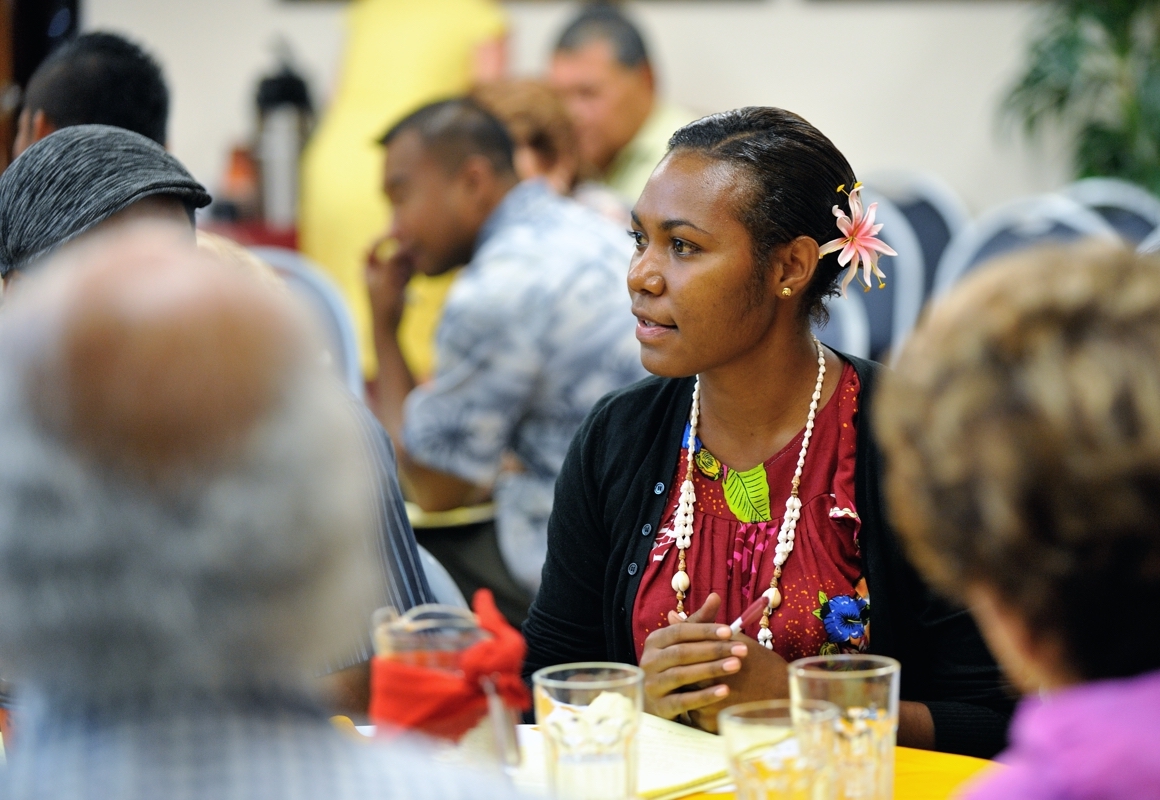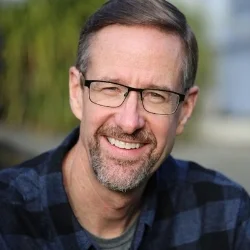Transitions to Second-Generation Leadership in Faith-Based Agencies
Darrell Dorr (MA in International Development, WCIU, 2004) has served since 1980 as an editor, writer, and project manager with Frontier Ventures (formerly known as the U.S. Center for World Mission). He has also contributed to special projects with Frontiers, Operation World, and the Center for the Study of Global Christianity.
WCIU Journal: Leadership Topic
May 31, 2018
by Darrell R. Dorr
“Botched leadership transitions occur with alarming frequency” (Ciampa and Watkins 1999, 162).
“Most Christian organizations do not handle regime turnover very well” (Clinton 1992, 7-9).
“The ultimate dilemma for the first-generation organization with a strong founder-generated culture is how to make the transition to subsequent generations in such a manner that the organization remains adaptive to its changing external environment without destroying those elements of its culture which have given it uniqueness, and which have made life fulfilling in the internal environment” (Schein 1983, 26).
“Leaders need to acknowledge that one of their central tasks, from the first moment of arrival, is to prepare the organization for future transitions at multiple levels” (Gilmore 1988, 253).
Highlights from Management Literature: Organizations and Succession
As the former EFMA president, Paul McKaughan noted, “Most organizations start as personal enablement structures. Guidelines are not clearly articulated because they’re not needed—the personification of the dream is still present” (MdKaughan 2003). The great challenge then is for the organization to effectively make the transition from “personal enablement structures” to second-generation leadership when growing awareness of the mortality of the founder, the increased size and complexity of the society, and external demands and opportunities press home the urgency of that transition. Much hinges on the self-awareness of the founder as well as his capacity to facilitate the transition:
Leaders need to acknowledge that one of their central tasks, from the first moment of arrival, is to prepare the organization for future transitions at multiple levels. Leaders are not indispensable and cannot collude with their organizations in making themselves so. From the moment of their arrival, they need to be thinking of their tenure in the context of the organization’s history and its future. They need to address the issues of succession, perhaps less by focusing on a particular individual but more by attending to the development of many important team members whose different skills and strengths offer the organization some hedge against future changes that may make one skill more relevant to an emerging future than another (Gilmore 1988, 253).
Since most management studies are written by detached “managers,” rather than “leaders,” it can be particularly enlightening to hear founders themselves comment about transitions to second-generation leadership. One such founder is Norm Brodsky, who has begun numerous companies and who displays refreshing candor in describing the painful transition to second-generation leadership in his current company. He also illustrates a rare sense of self-awareness that at some point the founder’s needs may diverge from the organization’s needs:
Looking back now, I have to admit the company was ready for the change long before I was. People were desperate for order, structure, and predictability; they wanted to know what they were walking into when they came to the office each day. … People like me aren’t any good at developing a management team. We don’t know how, and we don’t want to learn. We thrive in unstable environments. Instead, we breed instability, and management is all about creating stability through planning, organization, and commitment…. Here’s the bottom line: I may prefer chaos, but what I prefer doesn’t count now. My company has reached the stage where what it needs is more important than what I need (Brodsky 1997).
Another self-aware founder, Ichak Adizes, similarly notes, “In the founder’s trap, the self-interest of founders dominates at the expense of organizational interests” (1999, 323). Adizes has not only written books but also has developed an institute and consulting company to help founders and other leaders make healthier transitions from one stage to the next in corporate lifecycles: from Courtship and Infancy to Go-Go, and through Adolescence to Prime, with subsequent attempts to avoid degeneration from Prime. He gives considerable attention to Adolescence, for this is the critical transition (sometimes artificially prolonged by founders) from founder-driven leadership to the next generation. As a founder who advocates “freeing organizations from their founders,” Adizes is not advocating overthrow of or rebellion against founders. Rather, he advocates combating an unhealthy dependency that hinders organizational effectiveness.
Edgar Schein notes that founders tend to fulfill unique functions in the early history of their organizations: containing and absorbing anxiety and risk, embedding non-economic assumptions and values, and stimulating innovation (1983:22-23). During several stages of group formation, the culture evolves, reflecting the complex interaction between the assumptions and theories the founder brings to the table, and what the group learns from its own experiences (Schein 1983, 3). Given the tug-of-war that can develop between “the founding group” and “new, strong managers,” Schein invests great hope in “hybrid” leaders who can bridge the two groups and who can sustain the confidence of the founder while also transcending the founder’s perspectives.
Founders need insight into more than their own cultures; they also need adequate self-insight, as corroborated by Brodsky and Adizes. Yet adequate self-insight does not come easily. Toward the end of their lives founders are especially susceptible to blind spots and self-deception stemming from relational isolation and their reticence to confront character flaws, rather than choosing the kind of vulnerability and relational submission elaborated by Thrall, McNicol and McElrath (1999). The great challenge for founders is to “finish well.”
Highlights from Sociological Literature: Religious Organizations and the Routinization of Charisma
Christian anthropologist Robert Clinton cites Schein’s three cultural stages (birth and early growth, organizational midlife, and organizational maturity), giving particular attention to “boundary phase” between the first two stages. In this boundary phase, “As leadership transition approaches, the organizational culture becomes a battleground between those wanting to maintain it and those wanting to change it. The potential successor in leadership will be judged on whether they will preserve or change cultural elements” (Clinton 1992, 4-43). As the organization transitions into midlife, according to Clinton, the main issues include the decline of cultural integration as the organization diversifies, confusion on organizational identity, and the need for cultural management. Change agents within the organization need to realize that different stages of organizational maturity require different mechanisms of change (Clinton 1992, 4-42, 4-43).
Clinton also devotes significant attention to the dynamics of “regime turnover,” defined as “the process and practices involved in transitioning an old staff recruited under a former regime until it fits the new leadership’s idea of what its people should be and do.” He observes that “most Christian organizations do not handle regime turnover very well” (Clinton 1992, 7-9).
Like Robert Clinton, Tom Steffen is a Christian educator whose training in a Christian institution encompasses leadership succession. He advocates gradual leadership transition which allows staff to adjust to new styles and paradigms at a healthy pace (Steffen 2002). This is a pattern that was notably illustrated in the China Inland Mission at the turn of the twentieth century. Steffen postulates that within successful succession there is careful cultivation of both continuity and change. Continuity is sought via “old hero stories” and other means to preserve core values and purpose, while “new hero stories” are one means, among others, to help members of the organization to know where they’re going and to embrace changes in culture, operating practices, goals, and strategies.
Steffen also anticipates various barriers to change and proposes related strategies with which leaders can respond. In response to anxiety and uncertainty, he prescribes training in new skills and wide participation in discussion and implementation. In response to the loss of clarity and stability, he prescribes broad and deep communication as well as a renegotiation of formal patterns and policies. In response to conflict between “winners” and “losers” amidst the transition, he prescribes the cultivation of arenas where issues can be renegotiated and new coalitions formed. In response to the organization’s tendency to cling to the past, he prescribes “transition rituals” in which the past can be mourned and the future celebrated (Steffen 2002).
Sociologist Reinhard Bendix described ways an organizational community could transition from a founding charismatic leader:
Methods are developed to find successors so that the community will be assured of the beneficent power of charisma. Weber distinguished three such methods: (1) A new charismatic leader is designated on the basis of criteria that are thought to ensure the requisite charismatic qualities of the chosen one .... (2) The original charismatic leader designates his own successor or representative, and the followers recognize this designation through acclamation…. (3) The disciples and followers of the charismatic leader are believed to be best suited to designate a qualified successor…. All three methods, of course, lead away from “charismatic leadership” in the sense of a uniquely personal mission. To select a successor in terms of criteria or rules objectifies what was originally personal…. But all three methods retain the one element that distinguishes “charismatic leadership” from other types of domination: the exercise of authority is bound up entirely with a concrete person and his distinctive qualities (Bendix 1962, 304-306).
Much of the drama of the transition from first- to second-generation leadership lies in an organization’s confusing ambivalence. On the one hand, members of the organization remain drawn to at least portions of the founding charisma. Yet, as Weber observed, “By its very nature, the existence of charismatic authority is specifically unstable” (Gerth and Mills 1958, 248). On the other hand, Weber notes, “One of the decisive motives underlying all cases of the routinization of charisma is naturally the striving for security” (Weber 1947, 370). In other words, the question becomes, can the organization have charisma and security at the same time?
Conclusion
Organizational consultant Tom Adams notes, “Transitions involving the departure of the founder (or long-term executive with many similarities to a founder) are the most perilous, as key internal and external constituencies (employees, funders, etc.) tend to identify the organization with its first leader” (Adams 2004, 7). Adams chooses to focus on the positive side, pointing to the new season of growth into which some organizations have entered:
Proactively managed, leadership transitions provide a “pivotal moment.” Faced with a (sometimes disconcerting) pause in business as usual, organizations can re-examine current practices, positioning, even mission, direction, and vision (Adams 2004, 5). For a group losing its founder or a long-term executive, sustaining its current effectiveness is an important accomplishment. For some organizations, however, leadership transition is transformational. It serves as a moment when new possibilities can not only be imagined, but realized (Adams 2004, 9). Once the executive announces he or she has a departure date, an organization enters a leadership “neutral zone,” where the current leader is letting go, and the agency is awaiting the new leader. This is an unusually powerful and opportune time in an organization’s life cycle for capacity building—taking stock, opening up to new strategic directions, and making changes based on current and prospective challenges and opportunities (Adams 2004, 11).
Today’s faith-based agencies in the throes of transition from the founder to second-generation leadership can glean much from reviewing literature such as that summarized in this essay. No formulaic or glib answers suffice, but a careful and selective adaptation of insights from the literature can be helpful. Hopefully agencies will excavate the transferable lessons now buried in their archives, thereby adding to a common pool of knowledge to be utilized by “sodalities” so instrumental to international development in the 21st century.
References
Adams, Tom. 2004. Capturing the Power of Leadership Change: Using Executive Transition Management to Strengthen Organizational Capacity: Monograph #1, Executive Transitions Monograph Series. Washington D.C.: TransitionGuides (now Raffa). https://www.raffa.com/newsandresources/publications/documents/aecf_cappower.pdf.
Adizes, Ichak. 1999. Managing Corporate Lifecycles. Paramus, NJ: Prentice Hall.
Bendix, Reinhard. 1962. Max Weber: An Intellectual Portrait. Garden City, New York: Anchor Books.
Brodsky, Norm, and Bo Burlingham. 1997. Necessary Losses. Inc. Magazine (December 1).
Ciampa, Dan, and Michael Watkins. 1999. The Successor’s Dilemma. In “Reprint 99604.” Special issue, Harvard Business Review (November–December): 161-68. https://www.researchgate.net/profile/Michael_Watkins6/publication/12652882_The_Successor’s_Dilemma/links/53e1cb0c0cf24f90ff65830c.pdf.
Clinton, J. Robert. 1991. Bridging Strategies: Leadership Perspectives for Introducing Change. Altadena, CA: Barnabas Publishers.
Gerth. H.H. and C. Wright Mills. 1958. From Max Weber: Essays in Sociology. New York: Oxford University Press.
Gilmore, Thomas North. 1988. Making a Leadership Change: How Organizations and Leaders Can Handle Leadership Transitions Successfully. San Francisco, Jossey-Bass.
McKaughan, Paul. 2003. Phone conversation with author, Pasadena, CA. July 10.
Schein, Edgar H. 1983. The Role of the Founder in the Creation of Organizational Culture. Massachusetts Institute of Technology: Alfred P. Sloan School of Management.
Steffen, Tom. 2002. “Crosscultural Leadership and Followership, Leadership Succession: Joshua.” Lecture, Fall Class, LaMirada, CA.
Weber, Max. 1947. The Theory of Social and Economic Organization. Trans. A. M. Henderson and Talcott Parsons. New York: Oxford University Press.


